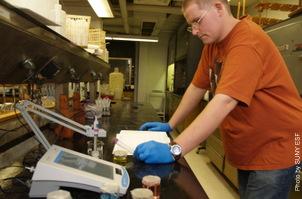
Building for the future: A strategy for an enduring and vital Adirondack Research Consortium
Our Strategic Plan
Building for the future
A strategy for an enduring and vital Adirondack Research Consortium
The Adirondack Research Consortium
The Adirondacks
New York State’s Adirondack Park has been characterized in many ways:
- A wild island amid the largest concentration of people on the North American continent
- The world’s longest-running experiment in conservation and development
- A 6-million acre patchwork quilt of public and private lands, towns and villages, and interconnecting ecosystems
- A Park as large as, or larger than, each of seven states and constituting 20% of New York State’s area
- A place where residents and visitors alike recognize its special nature, its unique constitutional protection, and the formidable economic, social, and environmental challenges it faces.
- Context - Building for the Future
The Adirondack Research Consortium (ARC) was informally established in 1994 by a small group of academic researchers and leaders of Adirondack-focused not-for-profit organizations. This group recognized the need for research-based knowledge to inform and guide policies, planning and management of the Adirondack Park’s public and private lands.
The Consortium has focused on stimulating research, acting as a knowledge-based forum and communicator among disciplines and diverse interests, and fostering initiatives that inform policies, planning, and management of the Park’s 6-million acres, a 50:50 mix of public and private lands. Prime means for this work have been the Annual Research on the Adirondacks Conference and the Adirondack Journal of Environmental Studies (AJES).
In 2005 ARC volunteer leadership developed a plan for the future, including incorporation into a bona fide not-for-profit organization with a small core staff, and a continued and enriched program, consistent with prudent financial management and fund-raising. Members at the annual meeting of ARC on May 24, 2006 approved the proposed plan, and ARC has been incorporated as a 501(c)3 organization. The charter Board of Directors met the same day to take the first organizing steps, ARC was incorporated as a 501(c) 3 organization in July, followed by an organizing retreat of the Board on August 8-9, 2006.
In 2007, the ARC hired an Executive Director to oversee its daily management. The organization further plans to establish a base of operations, enrich AJES, and establish an annual operating budget to fund its programs, services, and operations.
Mission
To encourage, facilitate, and enhance the availability of research-based knowledge and scholarship that advances the quality and vitality of the Adirondack Park and related environs.
Vision
An exemplar organization, working with diverse partners, that is dedicated to assuring that research is the basis for sound planning, management, andpolicy decisions which will contribute to improving the quality of life of its residents and the ecological integrity of the Adirondack Park. and
Guiding Principles
To be a catalyst for information and not advocate for issues or agendas
To be inclusive of all interests and perspectives
To respect the points of view of others
To provide a forum for open discussion and encourage research
To communicate in a manner that is clear and without jargon
Goals, Objectives, Tasks
Goal I
Continue to establish the Adirondack Research Consortium as a durable organization
Opportunity: Become the premier institution in the Adirondacks for the sharing of objective information about the Adirondack environment, society, and economy.
Goal II
Catalyze and Facilitate Research
Opportunity: To make a difference in the way decisions in and about the Park are made by providing for/facilitating the entry of scientifically defensible knowledge into the decision making process.
Goal III
Effectively Communicate Adirondack Research
Opportunity: To provide a visible, viable, vehicle for stimulating and encouraging cross-disciplinary research relative to the Adirondacks, serving as a forum and communication link to encourage research that informs policies, planning and management of the Adirondack Park’s public and private lands and communities.